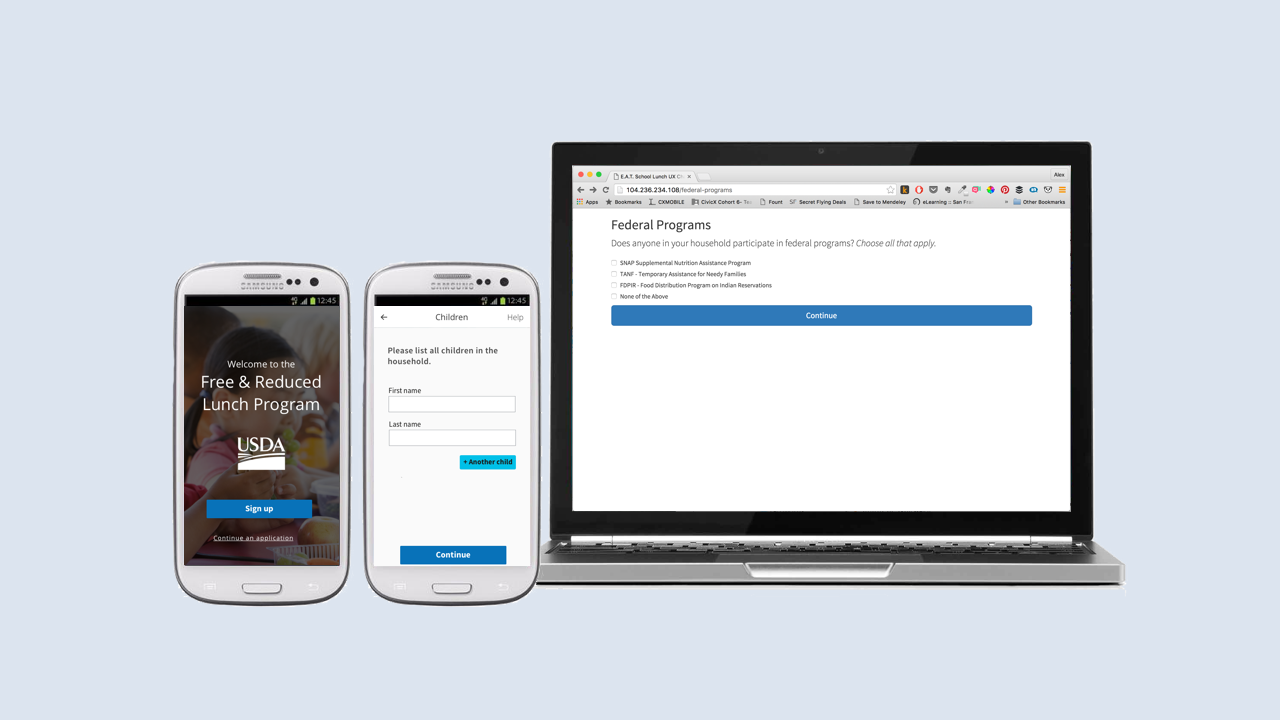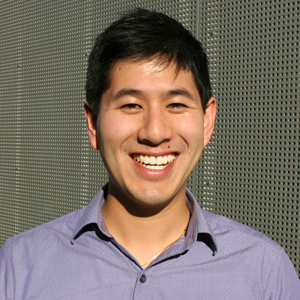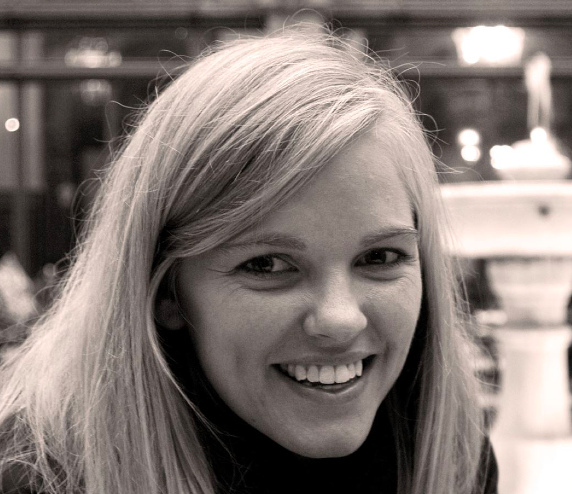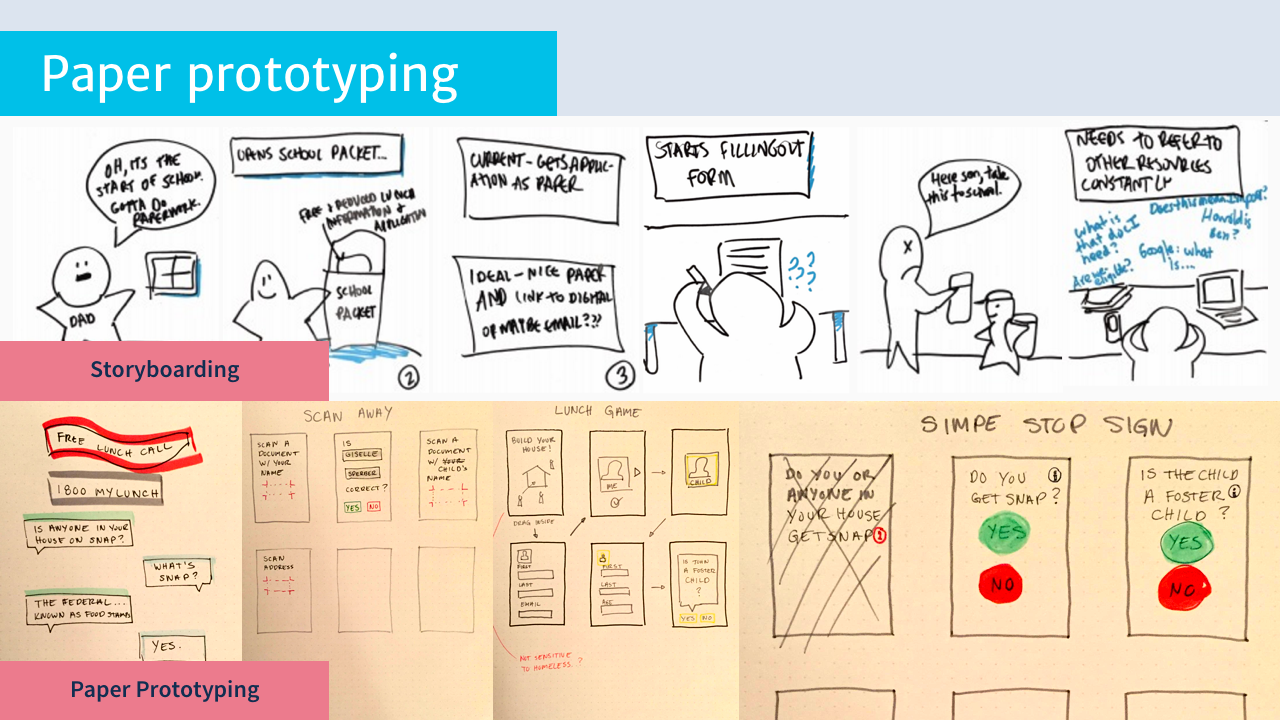
By Ellen Foord
School lunch. The words evoke a certain sense of nostalgia. Maybe you think of navigating cafeteria social cliques. Perhaps you remember the mid-day reprieve from the pressures of the classroom. You might even think of the foods you dreaded (or loved) in the lunch line. Tater tots!
But for millions of American school children, school lunch means one thing above all else: the only guaranteed meal they’ll get in a 24-hour period.
Over 30 million low-income school children receive free or reduced-price meals through the U.S. Department of Agriculture’s (USDA) National School Lunch Program. In order to receive those critically needed meals, each child’s family has to fill out a complicated paper form. There are often errors in reporting or processing the information, which cause issues with the eligibility decisions for applicants.
So, how did a group of students in Bentley’s Human Factors in Information Design (HFID) graduate program have a hand in applying user experience design (UX) to create a drastically easier process for millions of school children to access those nutritionally balanced meals?
The Challenge
 Enter the USDA’s E.A.T. (Electronic Application Transformation) School Lunch UX Challenge, calling on teams to re-design the lunch program application.
Enter the USDA’s E.A.T. (Electronic Application Transformation) School Lunch UX Challenge, calling on teams to re-design the lunch program application.
When Alexander Tran MSHFID '16, saw that the USDA had partnered with DevPost (a platform for hackers and developers) to host the design hackathon, he was immediately intrigued.
“I wanted to do the challenge because, as a young student, I received free and reduced-price lunch benefits. I was excited because here was a great opportunity to use my UX skills where it really matters,” recalls Tran. “Through the Bentley network, I knew I could recruit other Bentley UX folks to help.”
The Team
And reach out he did, connecting with other graduate students and alumni through Bentley’s HFID alumni Facebook group. When Cara Abel MSHFID '16 saw Tran’s post, she thought the project was appealing for several reasons: “The challenge allowed me to practice all that I'm learning about human-centered design for a social good outcome. About eight years ago, I taught in a low-income school in Costa Rica. I saw firsthand the difference that good nutrition made in my students' lives,” says Abel. “Having the opportunity to help families in need through this challenge was a natural move, given my interest in design, social good, food and education.”
When Cara Abel MSHFID '16 saw Tran’s post, she thought the project was appealing for several reasons: “The challenge allowed me to practice all that I'm learning about human-centered design for a social good outcome. About eight years ago, I taught in a low-income school in Costa Rica. I saw firsthand the difference that good nutrition made in my students' lives,” says Abel. “Having the opportunity to help families in need through this challenge was a natural move, given my interest in design, social good, food and education.” For Miriam Gerver Donath, a 2013 graduate of the HFID program, the appeal of the project lay in the relationship of the mission to her previous studies and work experience. “This particular challenge appealed to me because my first master’s degree is in survey methodology, so online forms are interesting,” she remarks. “And having worked for the U.S. Census Bureau, I know how burdensome government forms can get.”
For Miriam Gerver Donath, a 2013 graduate of the HFID program, the appeal of the project lay in the relationship of the mission to her previous studies and work experience. “This particular challenge appealed to me because my first master’s degree is in survey methodology, so online forms are interesting,” she remarks. “And having worked for the U.S. Census Bureau, I know how burdensome government forms can get.”
“This project is a true reflection of our students,” shares Bill Gribbons, professor of Information Design and Corporate Communication and director of the HFID program. “We attract people who have this sense of consciousness about making the world a better place. Lots of time people are drawn to something because it’s cool, sexy or will help them get a better job -- that wasn’t the motivation for these students. And this is what the tech community is looking for: employees with passion.”
The group -- called Team Lunchbox -- took shape as Tran, Abel and Donath were joined by fellow alumnus Andy Hollenhorst MBA '14 MSHFID '15, Eric Famiglietti (an engineer at Tettra) and Giselle Sperber (a UX Designer and analyst at Apple). As the team gelled, a concept emerged for the E.A.T. School Lunch challenge.
The Concept
Check out the design that Team Lunchbox created:
[[{"fid":"273531","view_mode":"default","fields":{"format":"default"},"type":"media","attributes":{"alt":"EAT School Lunch UX Challenge Submission - Team Lunchbox","class":"media-element file-default"}}]]
“We developed our concept through a comprehensive user-centered design process,” says Tran. That involved interviewing potential users and form experts, building prototypes, and then testing them with as many people as possible. They also focused on a mobile-first prototype, since (according to Pew Research Center) a large majority of low-income populations often only have a mobile device for Internet services.
Donath adds, “We wanted to create a process that was as simple and clear to understand as possible for applicants.”
According to Abel, the paper form currently used in the USDA School Lunch Program application is confusing and doesn’t explain why certain information is required. In addition, after researching the targeted demographic, the team realized they needed to make the language used in the application appropriate for all levels of reading comprehension.
“We wanted to make sure that we could simplify the language, so we did analysis on the reading level of the text to pare it down to easier-to-understand terms,” Abel reports. They aimed for an eight grade reading level.
They built the app with HTML, CSS, JS and PHP on Bootstrap and hosted it on Github.
The Logistics
But the project design wasn’t all smooth sailing. The team had to overcome an immediate challenge: logistics.
Tran lives in California and Donath is in New York City, while the other HFID students are local to Bentley.
“I had taken a class with Alexander, so I was familiar with his name, but he attends online from California and I attend on Bentley's campus, so I've never met him in person,” says Abel.
When asked how the team managed to develop an innovative user-centered design without physically meeting, Tran, Abel and Donath all agreed that working as a virtual team was surprisingly easy.
“Frankly, I didn't feel like we encountered any challenges in being a virtual team,” says Abel. “In the HFID program, there are a lot of group projects and often the groups are a mix of students who attend on campus and remotely.”
They primarily used Google Hangouts for their meetings, but wove in other collaborative tools (such as Google Drive, InVision and Mural) for sharing material.
The group also infused what they’ve learned at Bentley into the Team Lunchbox project. “Our education directly informed our research process and how we brought a strategic lens to how we built the application,” explains Tran. “We pushed the constraints of the challenge to include utility for mobile users, and also gave recommendations like universal ID that went beyond the direct design challenge.”
Abel agrees with Tran on how her experience at Bentley’s Graduate School shaped the experience. “The project was definitely influenced by all that I am learning in the HFID program. It was a great opportunity to put into practice the concepts that had been discussed in my classes.” "Team Lunchbox essentially got me the job I have now," shares Hollenhorst, now a UX designer for Sallie Mae. "I was interviewing for jobs as we were working on the project, and I would always show artifacts and discuss how they fit into the overall design. I really think the challenge helped make the case that I was working on relevant and important projects."
"Team Lunchbox essentially got me the job I have now," shares Hollenhorst, now a UX designer for Sallie Mae. "I was interviewing for jobs as we were working on the project, and I would always show artifacts and discuss how they fit into the overall design. I really think the challenge helped make the case that I was working on relevant and important projects."
“In our program we promote the idea of learning outside the classroom -- of creating a community of learners,” says Gribbons. “And it doesn’t end with graduation -- our students stay engaged with this community -- coming together around projects like this, presenting at conferences, participating virtually in campus events, etc.”
The Results
As for the results of the USDA’s E.A.T. School Lunch Challenge…Team Lunchbox won the Popular Choice award, which came with a $1,000 prize and was awarded on the basis of the public’s favorite application (determined by the number of votes the project received) among the 44 submissions from individuals, teams and large companies.
“It is a great honor,” said Tran of the prize. “I know there was a lot we could have improved in our prototype and I learned a great deal from examining all the other submissions that won awards. The biggest reward was all the learning gained from the process and working with my great collaborators. I will look forward to improving the design even further in the future.”
Ellen Foord is a freelance writer living in New Hampshire. A regular contributor for DIY Network, she has been featured on Apartment Therapy, HGTV Magazine, Yahoo, Verily and more.

